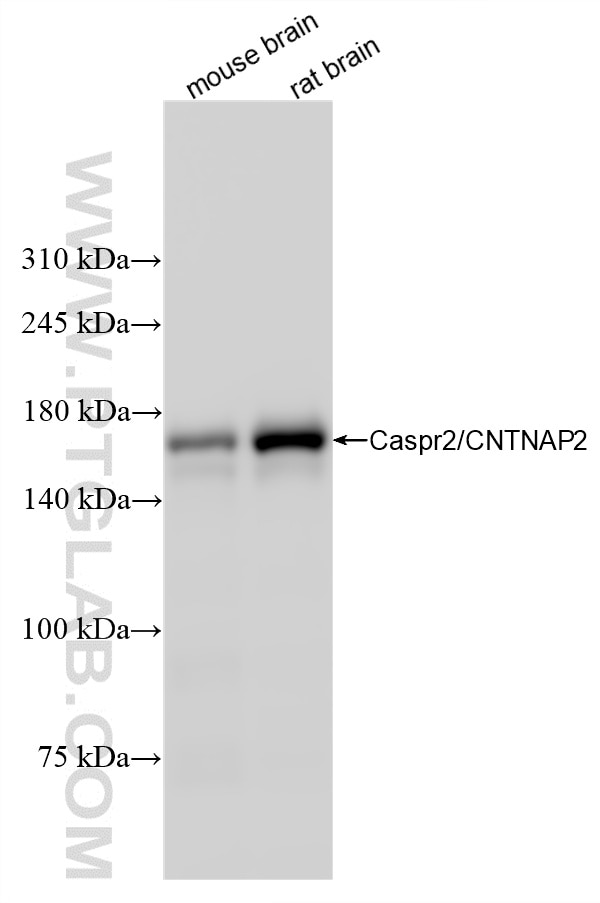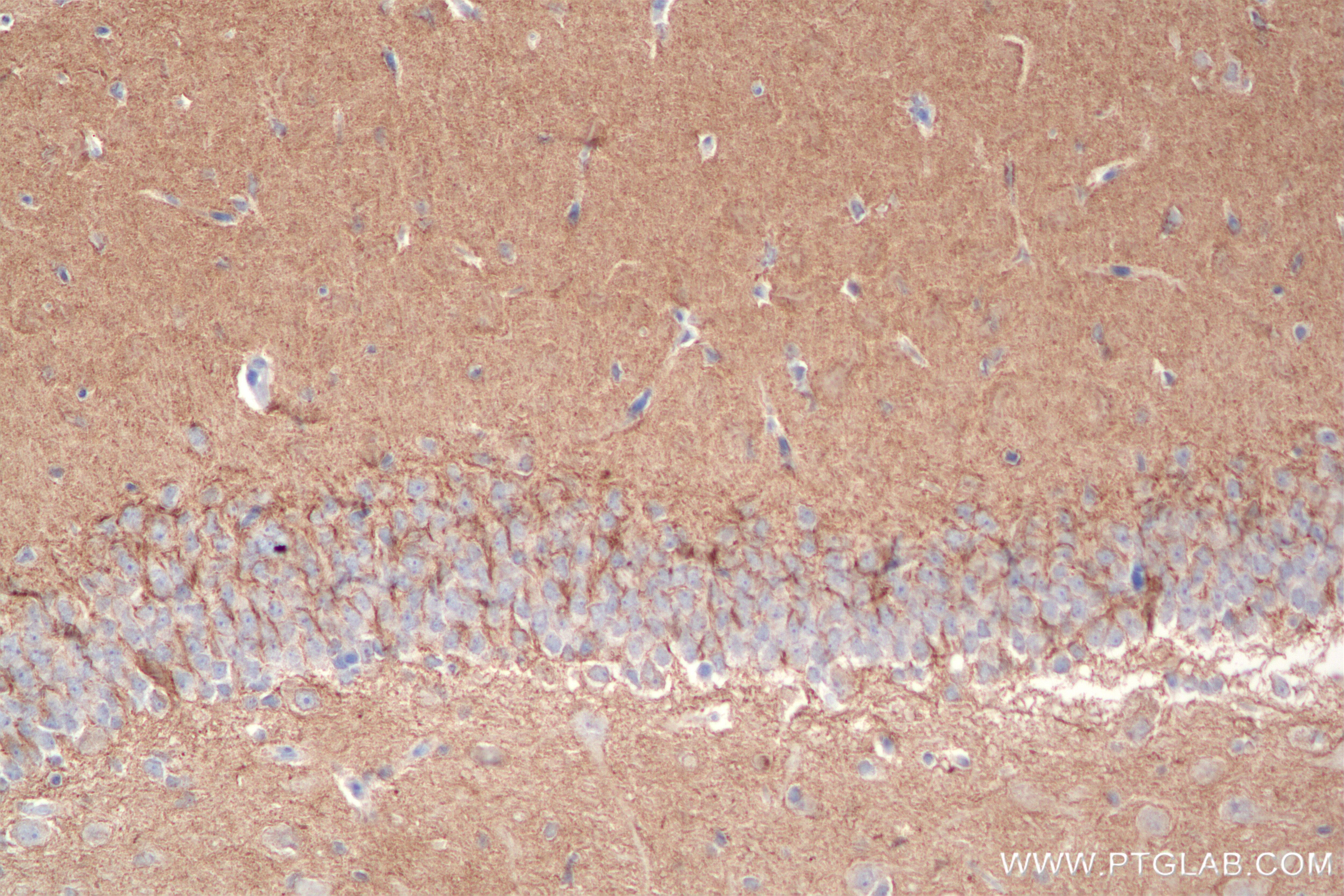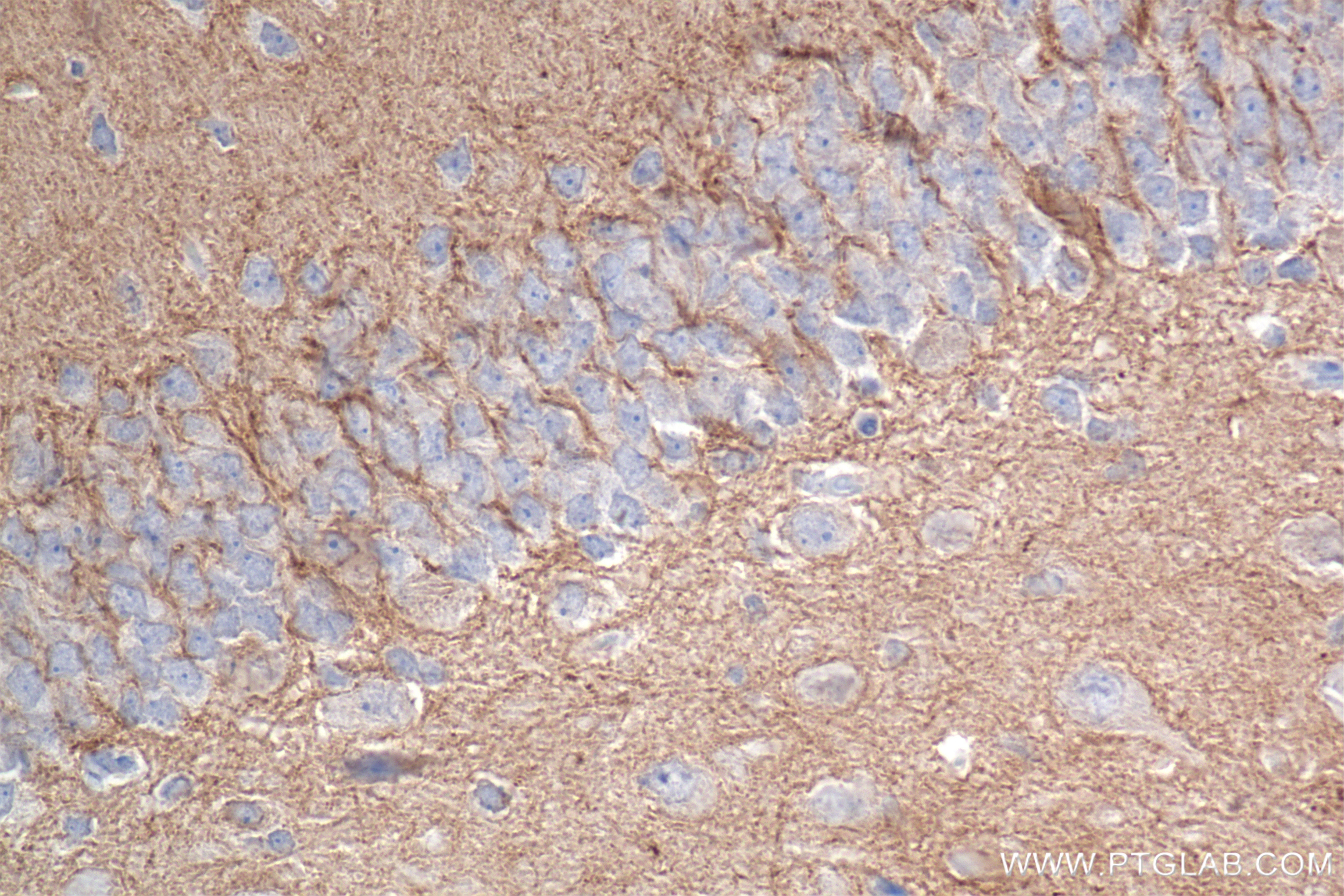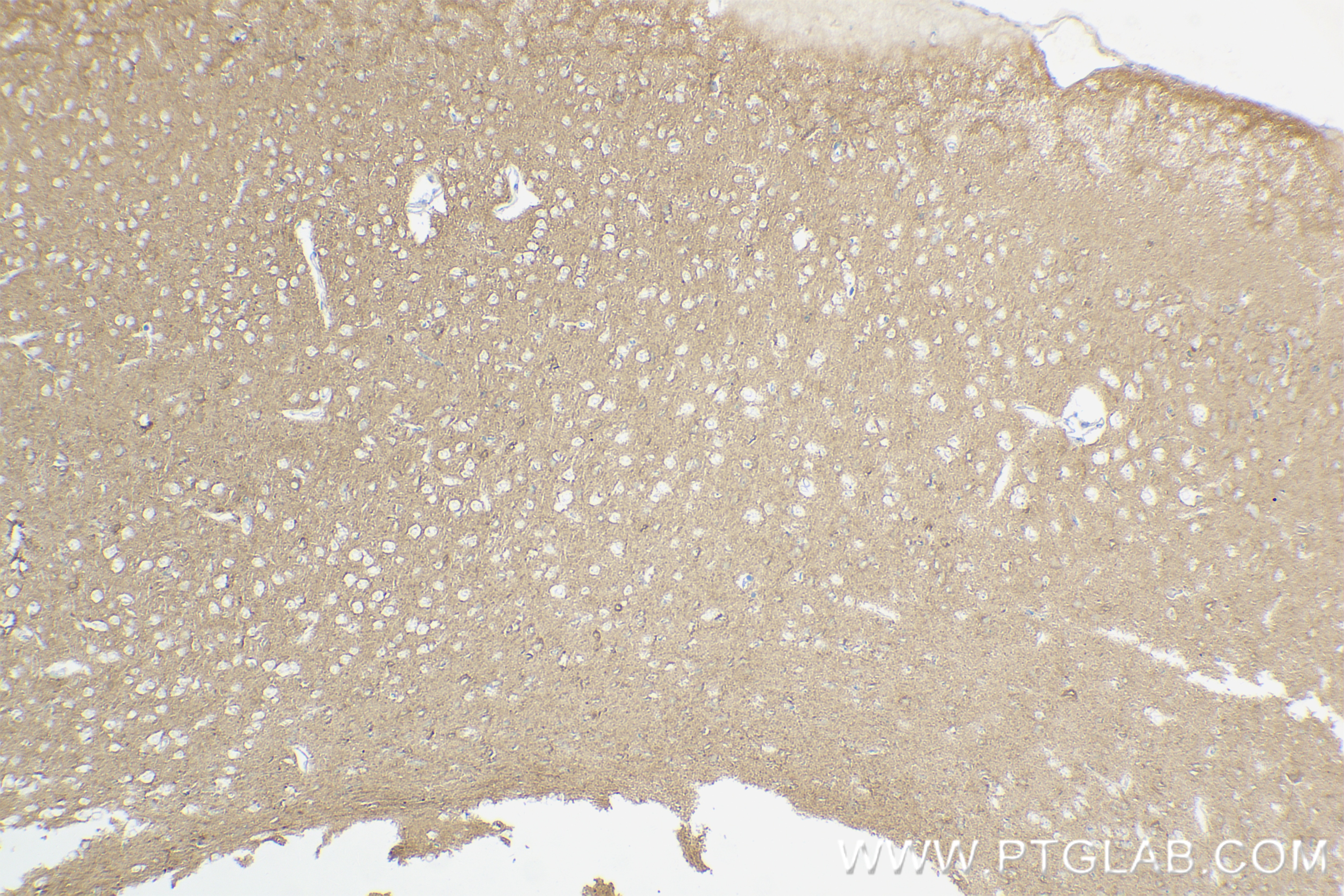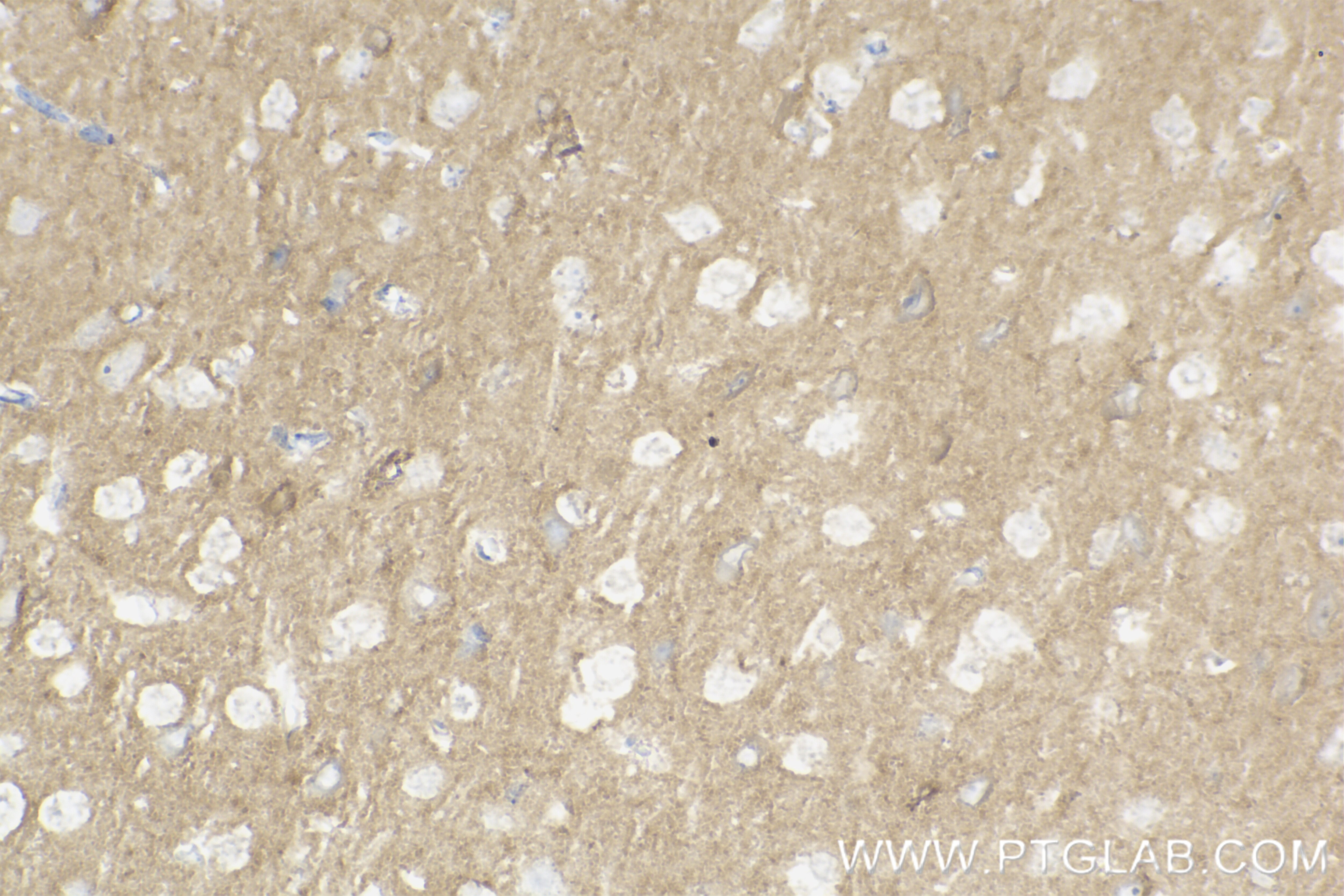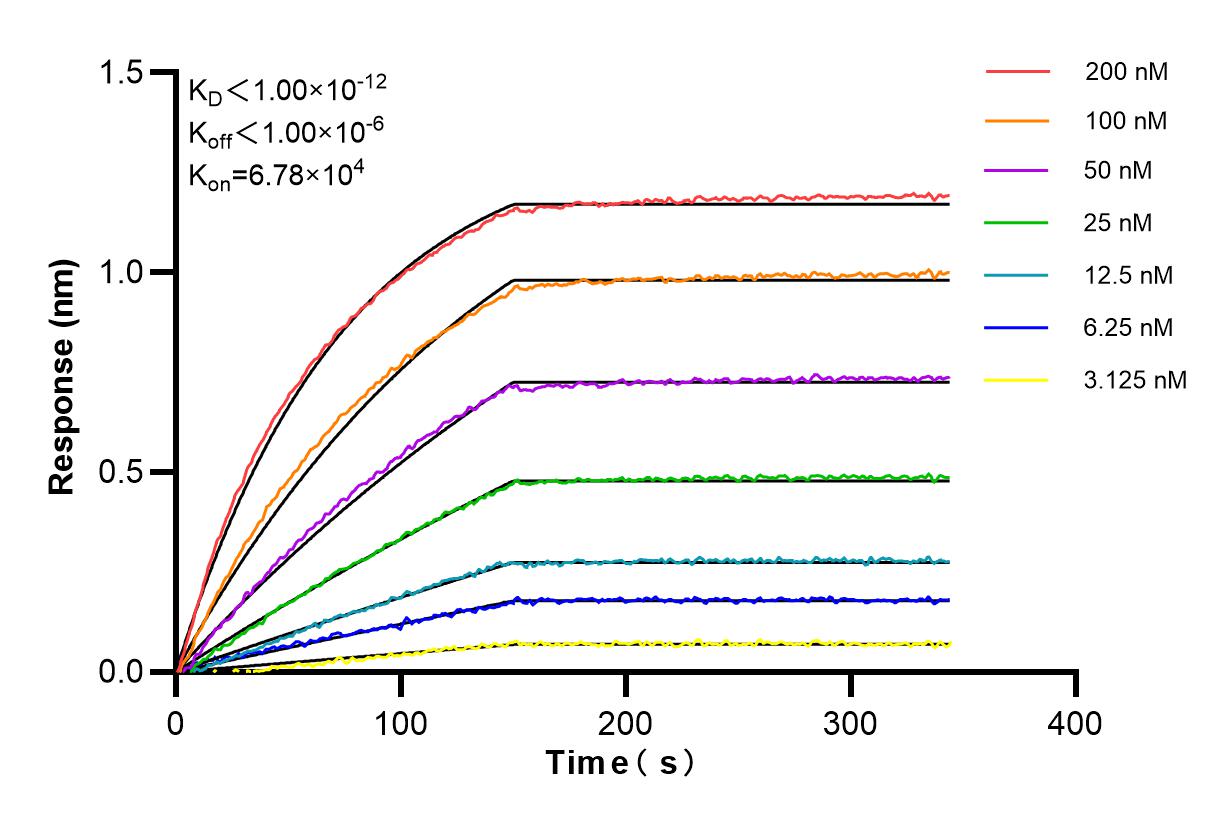Product Information
85116-4-PBS targets Caspr2/CNTNAP2 in WB, IHC, Indirect ELISA applications and shows reactivity with human, mouse, rat samples.
| Tested Reactivity | human, mouse, rat |
| Host / Isotype | Rabbit / IgG |
| Class | Recombinant |
| Type | Antibody |
| Immunogen | Caspr2/CNTNAP2 fusion protein Ag22844 Predict reactive species |
| Full Name | contactin associated protein-like 2 |
| Calculated Molecular Weight | 1331 aa, 148 kDa |
| Observed Molecular Weight | 148 kDa |
| GenBank Accession Number | BC113373 |
| Gene Symbol | Grancalcin |
| Gene ID (NCBI) | 26047 |
| Conjugate | Unconjugated |
| Form | Liquid |
| Purification Method | Protein A purification |
| UNIPROT ID | Q9UHC6 |
| Storage Buffer | PBS only, pH 7.3. |
| Storage Conditions | Store at -80°C. |
Background Information
Caspr2 is a member of the neurexin family which functions in the vertebrate nervous system as cell adhesion molecules and receptors. This protein, like other neurexin proteins, contains epidermal growth factor repeats and laminin G domains. In addition, it includes an F5/8 type C domain, discoidin/neuropilin- and fibrinogen-like domains, thrombospondin N-terminal-like domains and a putative PDZ binding site. This protein is localized at the juxtaparanodes of myelinated axons, and mediates interactions between neurons and glia during nervous system development and is also involved in localization of potassium channels within differentiating axons. This gene encompasses almost 1.5% of chromosome 7 and is one of the largest genes in the human genome. It is directly bound and regulated by forkhead box protein P2, a transcription factor related to speech and language development.
